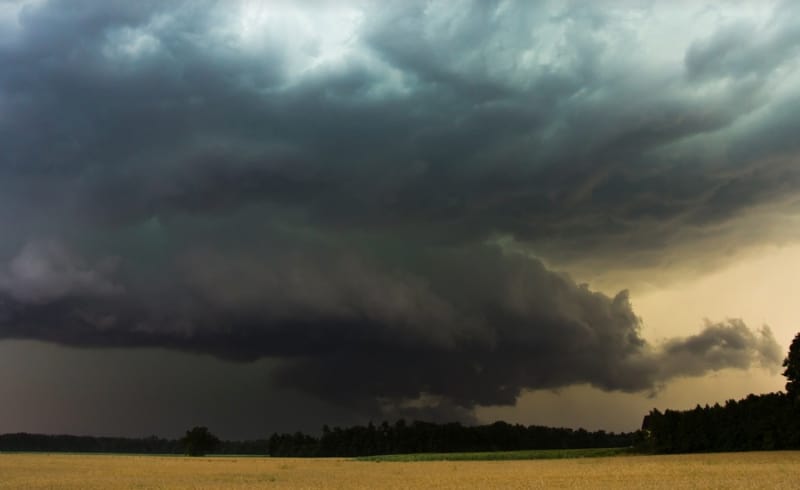Severe thunderstorms now a dominant driver of global insured losses: Swiss Re

Globally, the severe convective storm (SCS) peril caused insurance and reinsurance industry losses of $35 billion in the first half of 2023, the large majority of which occurred in the U.S., accounting for around 70% of worldwide insured losses from natural catastrophe events in the period, reports Swiss Re.
The first half 2023 nat cat report from reinsurance giant Swiss Re pegs global insured losses from events at $50 billion, up from $48 billion in the first half of 2022, making it the second most costly H1 period since 2011, and 54% above the ten-year average of $32 billion.
Economic losses from nat cats for H1 2023 stands at $120 billion, down slightly from $123 billion in H1 2022, but again above the ten-year average of $82 billion by 46%.
In terms of the insured loss total, Swiss Re notes the significant impact of a series of U.S. thunderstorms, which drove insured losses of $34 billion, the highest ever insured losses from this so-called secondary peril in a six-month period.
Swiss Re finds that 10 events resulted in losses of more than $1 billion each, compared to an annual average of six events for the previous decade. In fact, the reinsurer explains that insured losses of $35 billion globally from the severe convective storm peril are almost twice as high in a six-month period as the annual average of $18.4 billion for the past ten years.
“With severe thunderstorms as the main driver for above-average insured losses in the first half of 2023, this secondary peril becomes one of the dominant global drivers of insured losses,” said Martin Bertogg, Head of Catastrophe Perils at Swiss Re. “The above-average losses reaffirm a 5 – 7% annual growth trend in insured losses, driven by a warming climate but even more so, by rapidly growing economic values in urbanized settings, globally. The cyclone and flood events in New Zealand in the first quarter of 2023 are testimonies of the risk to today’s large urban centres, continuing patterns observed in 2021 in the Germany flooding, and in 2022 in Australia and South Africa.”
The report also highlights losses from two severe weather events in early 2023 in New Zealand, including severe flooding and the impacts from Cyclone Gabrielle, driving combined insured losses of an estimated $2.3 billion.
Additionally, heavy rainfalls and resulting flooding in Italy in the period is expected to lead to insured losses of $600 million, although with the economic loss expected to be around $10 billion, the protection gap here is particularly high.
The high protection gap is also evident with the earthquake in Turkey and Syria, with Swiss Re estimates pegging the insured loss at $5.3 billion against a World Bank preliminary economic loss total of $34 billion.
In contrast to the nat cat experience in H1 2023, the man-made catastrophe component declined year-on-year, in terms of both economic and insured losses, to $5 billion and $4 billion, respectively.
So, overall, economic losses from nat cats and man-made losses in H1 2023 stands at $125 billion, and the insured loss from these events at $54 billion, according to Swiss Re.
“The effects of climate change can already be seen in certain perils like heatwaves, droughts, floods and extreme precipitation. Besides the impact of climate change, land use planning in more exposed coastal and riverine areas, and urban sprawl into the wilderness, generate a hard-to- revert combination of high value exposure in higher risk environments. Protective measures need to be taken for insurance products to remain economical for such properties at high risk. It is high time to invest in more climate adaption,” said Jérôme Jean Haegeli, Swiss Re’s Group Chief Economist






